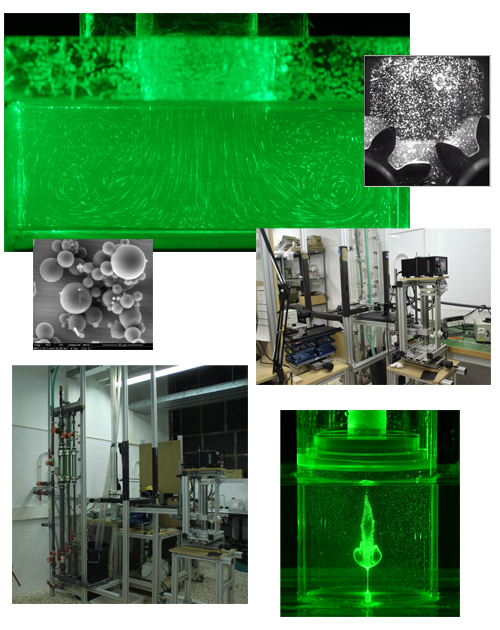Experimental Fluid Dynamics
It is known that Computational Fluid Dynamics (CFD) provides good results when analyzing fluid flow problems. Very often, in order to reduce computational time, it is necessary to introduce some simplifications to the real problem. Usually it is necessary to validate those approximations, and to do this validation some experimental measurements are needed. Experimental Fluid Dynamics (EFD) includes the methods and techniques for measurement, visualization and analysis of the data obtained when working with real or scale models of systems with fluid in movement.
ECoMMFiT has three laboratories fully equipped for fluid flow analysis, including a microscope with CCD camera for visualization and measurements in microfluidic systems. Particle Image Velocimetry (PIV) and Planar Laser Induced Fluorescence (PLIF) are two of the experimental techniques widely used by ECoMMFiT. These techniques allow quantitative measurements of the velocity components of the fluid and product concentration in systems with mixing and/or with chemical reaction. To apply the PIV and PLIF techniques ECoMMFiT has several high-speed CCD cameras (up to 4000 fps at 1280x1024 pixel resolution), laser equipment for illumination and has developed a new alginate microparticles to be used as markers in PIV ( read more about PIV, PLIF and microparticles).
In the last years, the team has opened a new research line in the field of fluid and biofluid rheology, and a complet set of equipment has been added to our labs to determine the most important rheological properties, including a Capillary Breakup Extensional Rheometer and a Rotational Shear Rheometer.



